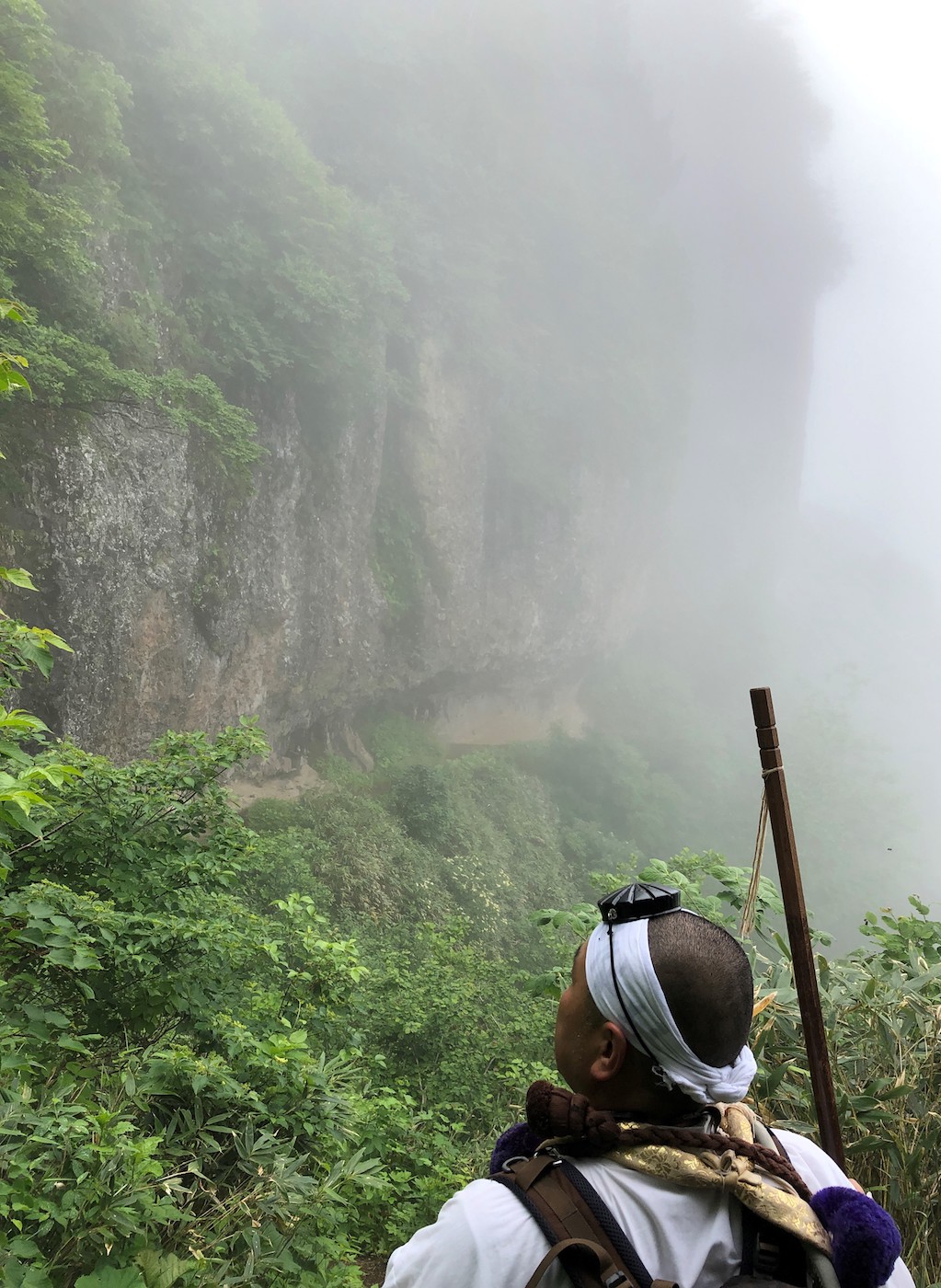
Photo by Caleb Carter
Deep in the mountains of Japan’s Nagano Prefecture lies a sacred place where people have worshipped for more than a thousand years. The sheer cliffs of Mount Togakushi, rising to 1,900 meters, may look intimidating to sightseers but the yamabushi, followers of Shugendo, have for centuries scaled the steep trail that leads to the top and meditated in the many caves and grottoes. Some still do so today.
Leading up to the base of the mountain is a wide trail that has been traversed by countless pilgrims who came to worship at this sacred site. The trail is lined with massive 400-year-old cedar trees and primal forest—a majestic sight that impresses those who walk here, whether or not they are spiritually inclined.
Zuishinmon, a red gate set in the middle of this trail, stands in contrast to the ocean of green. Passing through this gate means entering sacred space, and here one enters the most sacred area of a spacious complex of worship halls below the towering Mount Togakushi.
Nowadays this sacred site is referred to as Togakushi Shrine, and Shinto deities are worshipped here. Actually there are five shrines: Hokosha (lower shrine), Hinomikosha and Chusha (middle shrine), and Kuzuryusha and Okusha (upper shrine).
A two-kilometer path connects these shrines. Old stone markers and new trail pointers lead the way. Day pilgrims can follow in the footsteps of the yamabushi up to the mountain before turning back and seeking easier entertainment, while avid hikers continue onward, scrambling up on iron chains and traversing narrow ridges.
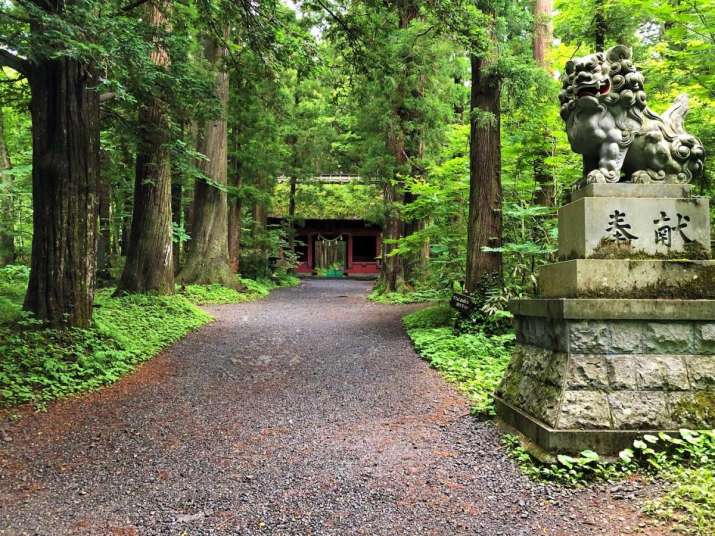
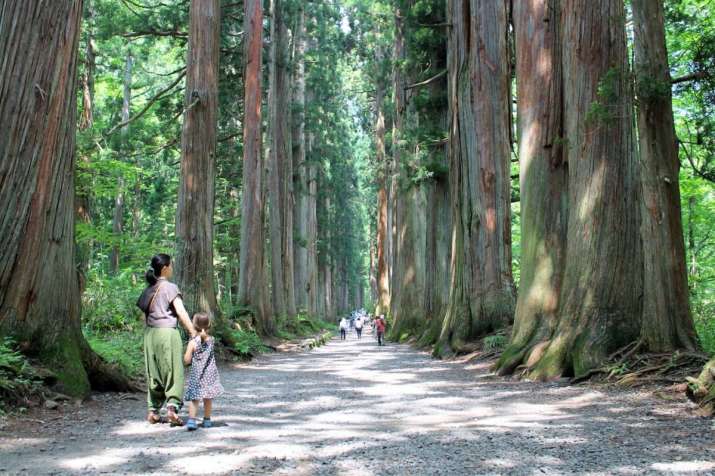
To learn more, we talked with Caleb Carter, assistant professor of Japanese Religions and Buddhist Studies at Kyushu University, who has been researching the Shugendo tradition at Mount Togakushi.
Buddhistdoor Global: Can you tell us a little about the historical context of Shugendo at Mount Togakushi?
Prof. Caleb Carter: Mount Togakushi has enjoyed a rich history of cave-based practices and other forms of asceticism dating back to at least the 12th century. Its remote and daunting landscape was said to be home to a powerful dragon spirit, and word of the mountain and its powers drew Buddhist practitioners from around the country. A lineage of Shugendo came to Togakushi early in the 16th century. The community established their own branch in the Edo period that was connected to the Tendai institution.
When Buddhism was severed from the site in the Meiji period under the national dis-association of shrines and temples (Shinbutsu Bunri), Shugendo (and Buddhism) formally ended at Togakushi. The three major temples on the mountain and their cloisters were transformed from combinatory sites of Buddhism, Shinto, and Shugendo into state-supported Shinto shrines, which continues to the present.
Shugendo itself was prohibited and hence Shugen-influenced rituals, such as the Hashira Matsuri at Togakushi, also were discontinued.
The Hashiramatsu, (literally, pine trunks) is a festival in which three columns of tied bamboo or pine branches, representing the three major temples (now the three major shrines), are stood upright and lit on fire. The first column to ignite determines the success of the coming year in terms of economic and agricultural gain for the community.
This festival is a symbiosis of various religious influences that were present at Togakushi and other sites around the country before the Shinbutsu Bunri. Before the main event, the Hashiramatsu, a number of performances take place, including taiko drumming, shishi kagura, and a ritual procession of religious and community leaders.
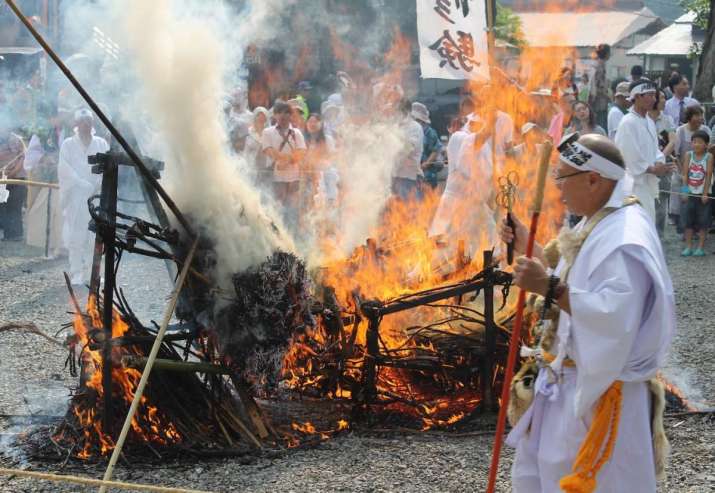
BDG: Have there been any revival efforts at Mount Togakushi?
PCC: There has been interest among residents and outsiders to revive elements of Shugendo at Togakushi in recent decades. Their efforts started with the restoration of the Hashira Matsuri.
The festival is attended by a Shugendo group based in Tokyo who play the horagai. At the event, these Shugenja, whose leader is affiliated with Mount Omine (Nara Prefecture), play the horagai, while priests of the shrines purify the ritual space and attendees, chant the Heart Sutra, and tend to the fire in similar fashion to the way in which saito goma rituals (a ritual bonfire) are administered by Shugenja.
At other times throughout the year, the group from Tokyo also practices at Togakushi and trains residents in the use of the horagai.
BDG: Are these revival efforts just localized or can we actually speak of a universal revival of Shugendo?
PCC: Efforts to revive Shugendo are generally local and driven by community or regional leaders rather than broad-based and institutionally arranged. However, they have often been guided by trans-local networks of practitioners, some of whom travel cross-country to participate in events and lend expertise. Shugenja based at Kinpusen (Mount Ominesan) have been particularly instrumental in this movement, although others from the Dewa Sanzan region (Hagurosan in Yamagata Prefecture) and elsewhere play important roles too.
Shugendo traditions seem to have been most resilient at Ominesan and Hagurosan, and have thus been important in bringing expertise and practitioners to other communities hoping to restart or strengthen their own traditions. Having said that, rituals such as mineiri (seasonal peak entries) suffered sustained disruptions at these locations from the 1870s until the postwar period.
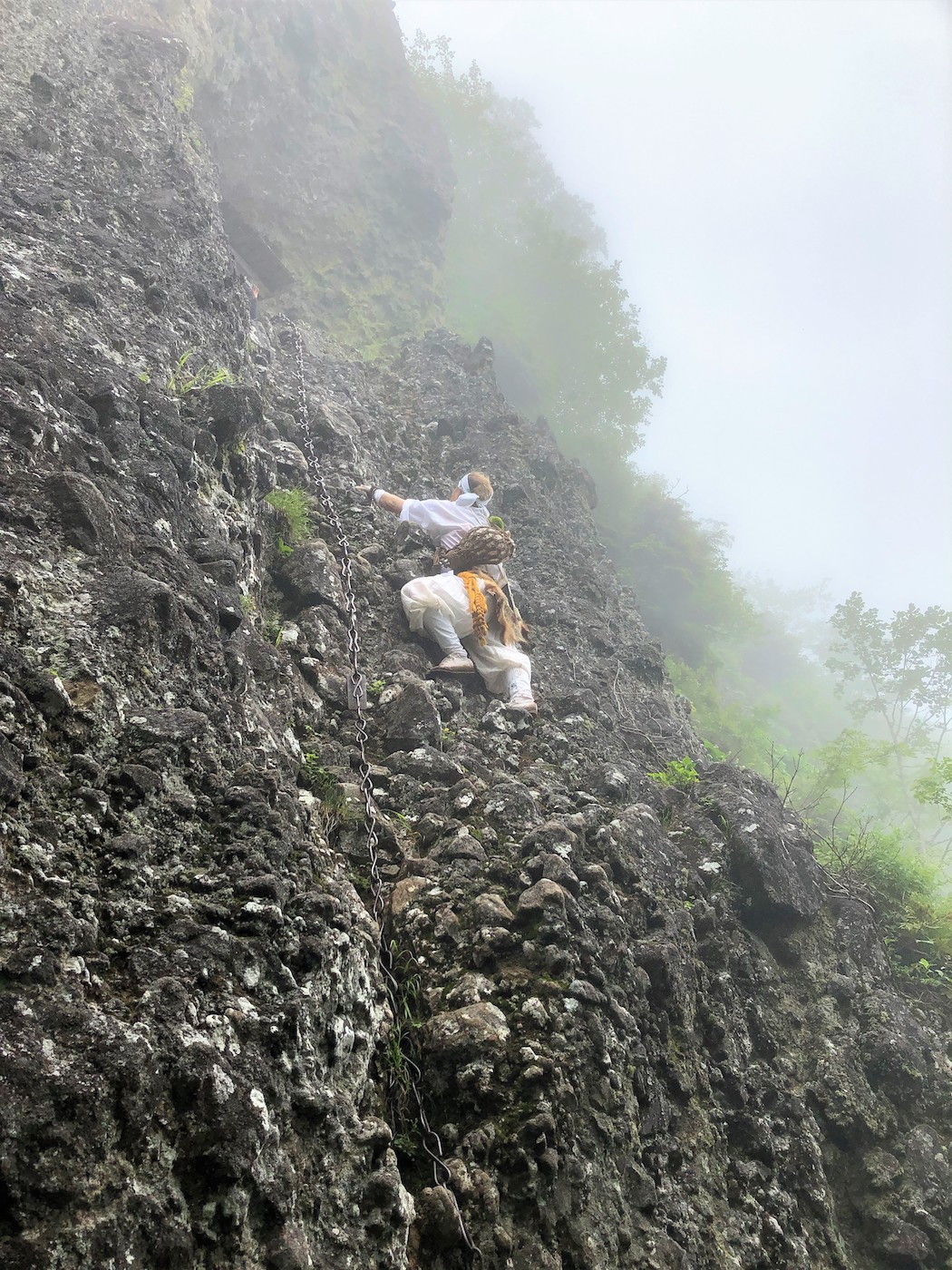
BDG: What needs to be in place to truly call it a revival?
PCC: My own research examines three facets of Shugendo: lineage, ritual, and narrative, in terms of its historical development. The tradition has been a great source of fascination for scholars and the general public for generations, yet its history is still poorly understood.
However, if we think of Shugendo as a self-conscious religious system whose members shared specific lineages, rituals, and local narratives, we can come closer to understanding what shapes it took over time and at the regional level.
The revival of Shugendo in recent decades has been pursued along different lines.
The first of these facets, lineage and institutional affiliation, and the sectarianism it bred, is arguably less important now, and Shugenja commonly collaborate across lineages.
The second facet of rituals and their transmission is, however, an important aspect in restorative efforts. Experienced Shugenja often travel across the country to share their expertise where local communities hope to recover Shugendo rituals and knowledge that has been lost since the Meiji period.
Finally, in terms of narratives, local lore surrounding En no Gyoja (the semi-legendary founder of Shugendo) play less of a role now than was the case in the Edo period. That said, new personal and communal stories inevitably figure into the continuation of religious communities, Shugendo or otherwise.
BDG: What is the timeline of revival?
PCC: There have been intermittent movements to restore Shugendo at various mountains throughout the country over the course of the 20th century and into the 21st. Especially from the 1980s, with successive efforts in the last two decades, one can establish a timeline based on the records of events like the saito goma and ritualized forms of mountain climbing. However, without local knowledge it is difficult to trace the activities of independent practitioners and small informal groups.
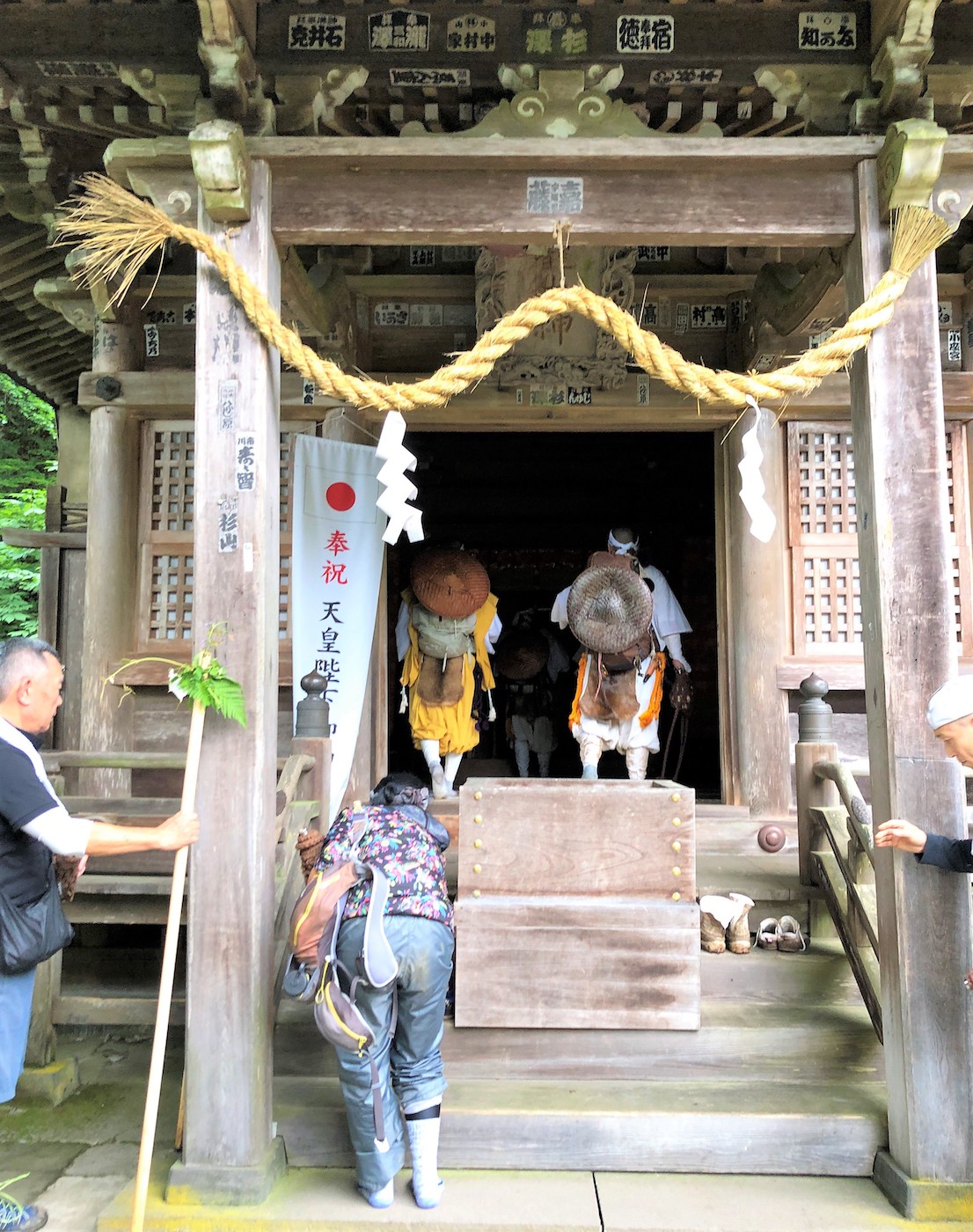
dragon deity, 2019. Photo by Caleb Carter
BDG: What is necessary for a revival to happen?
PCC: Leadership is critical, but there also needs to be a high level of interest and dedication from a core group of participants at a given site. Social media platforms, particularly Facebook, have been an important tool for promoting and organizing events.
Generally speaking, it seems that most groups welcome some degree of media coverage as they seek to grow as well as introduce Shugendo to newcomers.
In the Kumano-Yoshino region, UNESCO status has also increased public awareness of Shugendo and brought more attention, wanted and unwanted. The mountainous region was inscribed as a UNESCO Heritage Site under the title “Sacred Sites and Pilgrimage Routes in the Kii Mountain Range” in 2004.
BDG: Are women and foreigners part of a revival?
PCC: I have had limited contact with non-Japanese practitioners but there seems to be growing interest in Shugendo practice outside of Japan in recent years.
Women have played a central role in revitalizing Shugendo, organizing events, and taking leadership roles.
Despite the longstanding ban of women from Ominesan, one of the central mountains of Shugendo, I have observed roughly equal numbers of male and female Shugendo practitioners at events at Shugendo sites at Mount Togakushi (Nagano Prefecture), Mount Homan (Fukuoka Prefecture) and Mount Hiko (Oita Prefecture).
With thanks to Prof. Carter for this interview for Buddhistdoor Global. His forthcoming book, A Path into the Mountains: Shugendo and Mount Togakushi, explores this topic at length. It will be published by the University of Hawai’i Press in 2022.
Related features from Buddhistdoor Global
Connecting the Past and Present of Shugendo – The Revival of Japan’s Ancient Mountain Ascetic Tradition, Part One
Connecting the Past and Present of Shugendo – The Revival of Japan’s Ancient Mountain Ascetic Tradition, Part Three
Connecting the Past and Present of Shugendo – The Revival of Japan’s Ancient Mountain Ascetic Tradition, Part Four
Connecting the Past and Present of Shugendo – The Revival of Japan’s Ancient Mountain Ascetic Tradition, Part Five
Connecting the Past and Present of Shugendo – The Revival of Japan’s Ancient Mountain Ascetic Tradition, Part Six
Connecting the Past and Present of Shugendo – The Revival of Japan’s Ancient Mountain Ascetic Tradition, Part Seven














